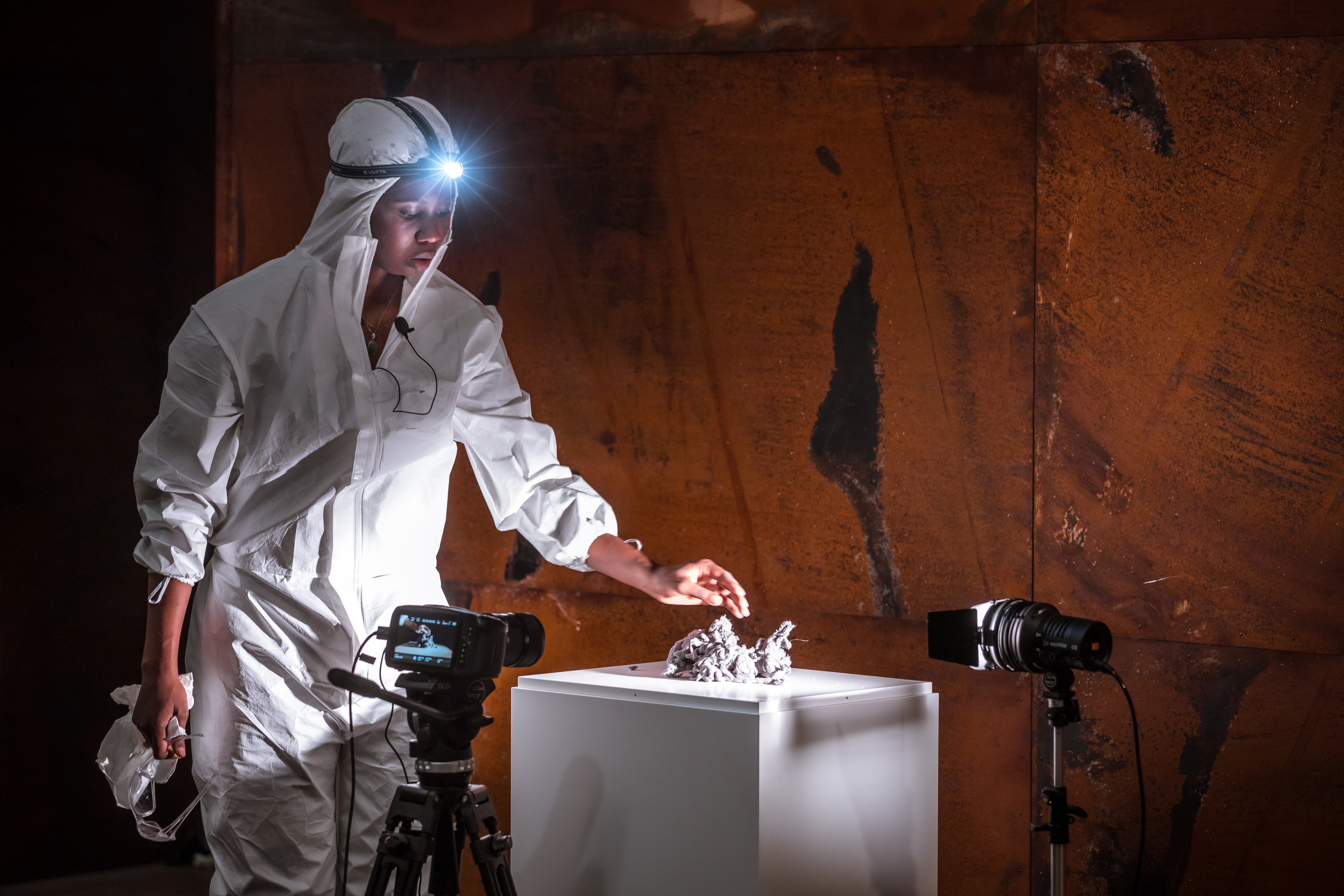











Wayward Dust
45 min.
2020
Performance at Deutsches Technikmuseum in collaboration with
On August 23, 2020, the International Day for the Remembrance of the Slave Trade and its Abolition, Monilola Olayemi Ilupeju debuted Wayward Dust, a performative intervention in which she collected the dust that had been accumulating for 17 years inside of the highly criticised and problematic Brandenburg-Prussian Slave Trade installation at the Deutsches Technikmuseum.
The performance was part of a larger project developed in collaboration with Dekoloniale. The project took up the difficult task of taking down an installation designed by Hans-Jürgen Buchert, a white German set designer, in the 90’s that rendered an inaccurate representation of the inside of a slave trade cargo ship. The installation was situated within “Lifeworld Ship”, the exhibition of the Navigation and Shipping Department of the Deutsches Technikmuseum Berlin, with the intention of introducing the role of Brandenburg-Prussia in the Transatlantic slave trade and contextualizing Europe’s booming shipping economy within the framework of colonialism. The installation contained 82 life-sized figurines placed behind a metal cage, depicting representations of the enslaved in humiliating, casual, and inaccurate ways. In its failed attempt to metaphorically interpret the idea of “the human being as an object of trade”, the installation, situated within an educational context for younger audiences, violently inserted a false, visual narrative of history into Germany’s public consciousness. The installation was open to the public for 17 years and was publicly criticized for the last several years by activists and civil society groups. In June of 2019, it was finally officially closed upon the initiation of the project.
A meditation on decay and regeneration, the main goal of Wayward Dust was to make visible the physical and intangible particles and processes within the work of building and deconstructing reality. Dust consists of sloughed-off dead skin cells (among other particles like hair, clothing fibers, bacteria, dust mites, bits of dead bugs, soil particles, pollen, and microscopic specks of plastic), which covers the styrofoam figurines. A reminder of the inhumanness of these figurines, the dust is a residue created by the visitors, employees, and workers of the museum over the past 17 years; every time someone stepped into the installation, they left a piece of themselves behind. Next to this record of presence, the dust speaks to the shapeshifting temporal nature of colonial practices, but also of liberation. In the present day, the installation has been completely dismantled, leaving a void within the exhibition space, full of new potentials.
The residue from the performance, including the dust and supplies, a full-length live stream, and an ever-changing installation was present in Eve of Intuition, a process-oriented solo exhibition and residency at The Institute for Endotic Research (TIER). During my presence at TIER, I used the exhibition space as a studio and casual meeting space to explore ideas related to intuition and uncover strategies to disrupt the flow of maintenance of oppressive systems, through interdisciplinary means.
~
Thank you to everyone who made the performance and celebration of the long-overdue renaming of M*Straße festival possible, it was a deeply rewarding day
Image Credit: SDTB / Hattendorf